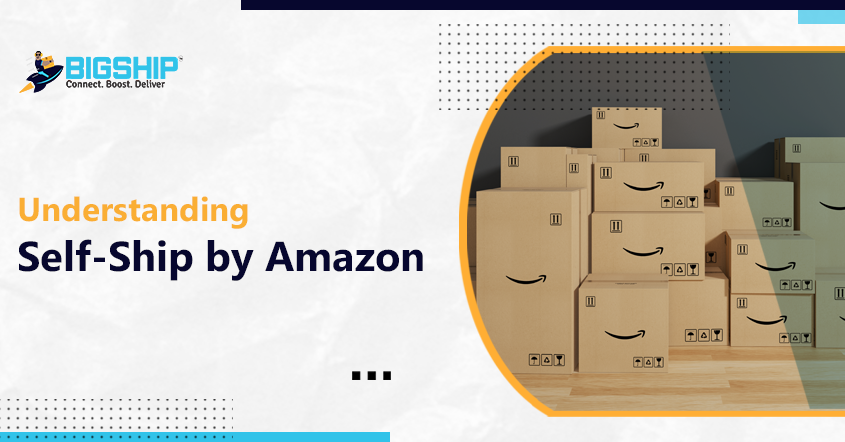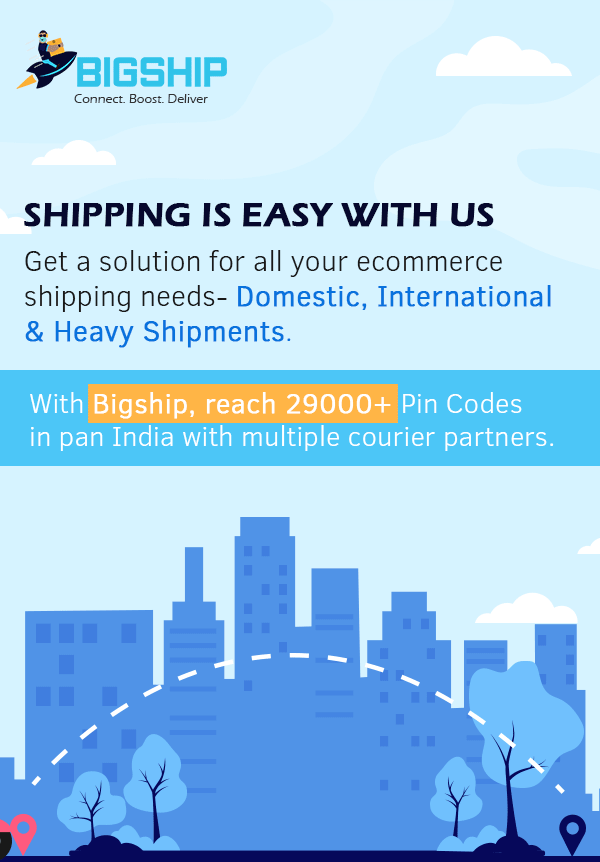Understanding Amazon Self-Shipping

Contents:
2. Basics of Amazon Shipping Options
3. Why Choose Self Shipping?
4. How To Get Started with Amazon Self-Shipping?
5. Challenges of Amazon Self-Shipping
6. Conclusion
7. FAQs
When you think of Amazon, the first thing that might come to mind is its incredibly fast shipping. Whether it’s a next-day delivery or receiving your package on a Sunday, Amazon has revolutionized how we think about getting our products quickly and efficiently.
While Amazon provides robust shipping options through its own network, there’s a segment that allows sellers more control over their deliveries, that is, Amazon Self-Shipping. Let’s delve into what self-shipping is, how it works, and why you might consider it for your e-commerce business.
What is Amazon Self-Shipping?
Amazon Self Shipping is a method where sellers manage their own inventory and shipping processes. Unlike FBA, where Amazon takes care of storage, packing, and shipping, self-shipping requires the seller to handle these tasks independently.
Self-shipping allows sellers to use their own resources or third-party logistics providers to fulfill orders. This means you have the flexibility to choose your own Amazon courier services, negotiate better rates, and maintain control over your inventory.
Basics of Amazon Shipping Options
Before exploring Selected Self-Ship by Amazon, it’s essential to understand the different shipping and fulfillment options Amazon provides:
Easy Ship
With Easy Ship, Amazon Transportation Service (ATS) picks up packed orders from your location and delivers them directly to your customers. This program simplifies the delivery process. Customers can track their orders and see the expected delivery date. In the Easy Ship program, customers can choose between Prepaid and Cash on Delivery options. Payments from customers are credited to your account after the delivery is completed. This method is particularly suitable for sellers offering products with low margins.
Fulfillment by Amazon (FBA)
FBA allows you to send products in bulk or individually to Amazon’s fulfillment centers. Amazon stores your products, and once an order is placed, they handle the packing and delivery. FBA is ideal for sellers with high-margin products or those selling in large quantities, including oversized items. For new joiners in the FBA program, Amazon waives specific FBA fees for the first 100 units or the first three months. During this period, you don’t need to pay for storing, packing, or delivering your products.
Self-Ship
Self-ship allows sellers to handle their own orders, packing, and delivery using third-party courier services. This option is available in areas where Amazon services are limited or unavailable. You can use India Post or deliver the products yourself in local areas. If you own a local store, you can earn the Prime badge for nearby zip codes by using Local Shops on Amazon.
Why Choose Self Shipping?
Self-shipping comes with its own benefits. Some of them are mentioned below:
Greater Control: One of the primary reasons sellers opt for self-shipping is control. When you handle Amazon shipping yourself, you have complete oversight over the entire process. This includes choosing the packaging materials, deciding on the shipping speed, and selecting specific Amazon shipping services that best suit your business needs.
Cost Management: For many sellers, self-shipping can be more cost-effective. By negotiating directly with courier services, you can find more favorable shipping rates, which can significantly reduce your overall shipping costs. This is particularly beneficial for businesses that ship large volumes or heavy items, as these can be quite expensive to ship through Amazon’s fulfillment network.
Flexibility: Self-shipping provides flexibility in terms of inventory management. You can store your products in your own warehouse or use a third-party storage solution. This can be especially advantageous during peak seasons when Amazon fulfillment centers might be crowded, leading to potential delays.
How To Get Started with Amazon Self-Shipping?
The process of Amazon self-shipping is quite easy and straightforward. The steps are mentioned below.
Confirm Order: As soon as you receive an order, ensure you pick the correct product for shipping. Verify the product details against the order details. Pack the product securely.
Print Shipping Label: On the Manage Orders page in Seller Central, find the Print Packing Slip option in the action column. Print the packing slip and separate it from the shipping label along the dotted line. Include the packing slip inside the package and attach the shipping label to the outside. Lastly, mail the item to your customer.
Confirm Shipment: Now go to the Manage Orders page and click the Confirm Shipment button next to the order. Update the ship date, shipping carrier, and tracking number. For hand-delivered items in the same city, select Specify Carrier and enter “hand-delivered” in the text box. Click Confirm Shipment to complete the process.
In order to dispatch multiple packages for one order, click on Add a Package on the confirm shipment page, enter the necessary details for the second package, and click Confirm Shipment.
Challenges of Amazon Self-Shipping
While self-shipping offers many benefits, it also comes with its own set of challenges. Some of these challenges are mentioned below:
Increased Responsibility: When you choose self-shipping, you take on more responsibility for the entire shipping process. This includes managing inventory, packing orders, and dealing with customer service issues related to shipping. It requires a significant time investment.
Handling Returns: Returns can be particularly challenging for self-shippers. Unlike FBA, where Amazon handles returns on your behalf, self-shipping requires you to manage the return process.
Maintaining Delivery Standards: Late deliveries or damaged products can result in negative feedback and impact your overall seller performance. It’s essential to partner with reliable couriers and ensure your packaging is up to standard to avoid these issues.
Conclusion
Amazon Self-Shipping offers sellers greater control, cost management, and flexibility in handling their orders. By managing your own inventory, packaging, and shipping, you can tailor the process to meet your business needs, negotiate better rates, and ensure a high level of customer satisfaction.
However, it’s essential to weigh these benefits against the increased responsibility and potential challenges, such as handling returns and maintaining delivery standards. By following the outlined steps and partnering with reliable couriers, you can effectively implement self-shipping to enhance your e-commerce operations and build a strong and trusted brand.
Sign up with Bigship to start self-shipping Amazon orders !
Amazon Self-Ship: FAQs
Ques: What are the benefits of self-ship on Amazon?
Ans: Some of the benefits of select self-ship on Amazon are:
- Sellers can maintain oversight over packaging, shipping speeds, and courier selection.
- Sellers can secure better shipping rates by negotiating directly with couriers.
- Sellers can manage inventory in their own warehouse or with third-party storage.
Ques: What does self-ship mean on Amazon?
Ans: Self-ship on Amazon means sellers handle their own inventory, packaging, and shipping processes, using third-party couriers instead of Amazon’s fulfillment network, providing greater control and flexibility.
Ques: What is Easy ship?
Ans: Easy Ship by Amazon is a program where Amazon picks up orders from sellers, handles packaging and delivery, and provides order tracking. It simplifies shipping for sellers, offering reliable delivery and customer satisfaction without the seller’s direct involvement in logistics.





